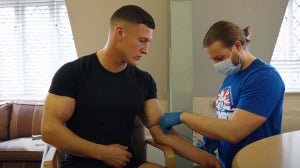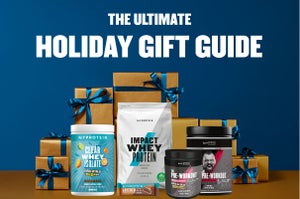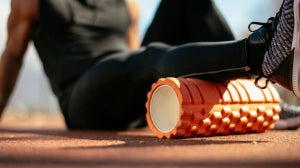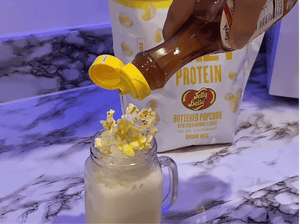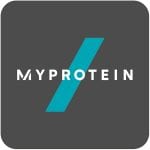
The main function of the knee joint is to bend and straighten the leg and to allow the body to change positions. Walking, running, jumping, sitting, and standing are all movements that occur with the help of the knee joint. The stabilization mechanism of the knee joint comes in the form of thick bands of tissue, called ligaments. These ligaments keep the knee joint in its respective movement pattern.
The ACL (Anterior Cruciate Ligament) and PCL (Posterior Cruciate Ligament) keep the knee joint from sliding forward and backward. The MCL (Medial Collateral Ligament) and LCL (Lateral Collateral Ligament) keep the knee from buckling side to side.
With nearly 200,000 annual cases, ACL injuries are by far one of the most common injuries in the United States. When an ACL injury occurs, primary repair of the ACL does not usually provide a great result, as opposed to the Medial Collateral Ligament (MCL). These injuries occur most often in individuals who participate in sports such as soccer, football, basketball, rugby, etc. The ACL can become sprained or torn due to a direct hit to the knee by an opposing player.
However, more than half of all ACL injuries occur with no contact at all. The injury can occur at this instance due to the athlete/individual rapidly changing directions, sudden deceleration, and improper jump landing due to poor mechanics or muscle imbalances.
Why Is The Healing Process So Poor?
Biomechanical stresses, blood supply problems, and nutrition can be a major contributor to why there is such a poor healing process. Nutrition is often an overlooked aspect when it comes to recovery because the fear of gaining weight while being inactive is often a concern, especially with athletes who are concerned with their physique.
Without adequate rest and nutrition, one’s ability to recover quickly diminishes. The athlete may not know, however, that their resting metabolism actually increases roughly 15-50% depending on the severity of the injury. Some of the common steps that come with an injury are proliferation and remodeling.
The purpose of this article is to give more insight on how to properly eat and supplement when it comes to injuries such as this one. However, if the athlete were to return to activity too soon, his/her body may not be fully healed. If this occurs and a similar blow occurs during participation in sports or everyday routine, the result may be even more detrimental. Some of the key nutrients that will help aid in the recovery process of these types of injuries, as well as their benefits, will be outlined below.
The Key Phases of Injury
There are a few key phases that take place during an injury. These phases include proliferation and remodeling.
Proliferation is the process where the body begins to form the bonds, which knit together to grow new tissue. The tissue formed in this process is not quite as strong but provides some support and structure for the body.
Remodeling can last anywhere from 1-2 years post injury and repair. This is the process to build and form new tissue that is nearly as strong as the original. We will look now at some of the nutrients that are crucial for these processes to be started and finished effectively so that injury time can be diminished as much as possible.
Breaking Down Macros
Let’s first look at protein. Protein is a key macronutrient for the body when it comes to muscle mass. Our muscle tissue is made up exclusively of protein. If muscles are weak, the general strength of their attachments (tendons) will also be weak. So while rehabbing, it is crucial to continue ingesting necessary amounts of protein in order to preserve as much muscle mass as possible.
There are many sources of protein that one can choose from. These include lean meats, eggs, whey protein and dairy. When it comes to our connective tissue, the bulk of our ligaments and tendons are made up of a protein called collagen.
Collagen is the most abundant protein in the body and is needed in order to keep tendons and ligaments strong and in a healthy state to protect against injury. One of the main food sources of collagen is gelatin. Gelatin is a unique food because it is not a common food eaten regularly in the American diet. Gelatin is made from the ground up cartilage and connective tissue of some animals. In my opinion, the best nutritional practice to rebuilding skeletal muscle is to eat the muscle tissue of animals because of the breakdown of amino acids and the best possible practice to rebuilding the body’s connective tissue framework is to ingest the same. Gelatin can be flavored (juices, extracts, crystal light, Branched Chain Amino Acid supplements, etc.) in order to give it a flavor that is palatable.
Eating foods that possess anti-inflammatory characteristics should be eaten and incorporated on a daily basis to help reduce the amount of swelling and pain in the affected area. Omega-3 Fatty Acids are the primary foods that possess these anti-inflammatory benefits. Omega-3 Fatty Acids are primarily found in foods such as salmon, tuna, mackerel, anchovy, and other types of fishes. Non-fish foods include chia seeds, flax seeds, kale, green beans, soybeans, etc. Fatty Acids are essential particularly due to their EPA (Eicosapentaenoic Acid) and DHA (Docosahexaenoic Acid). These two organic acids have specific features, which make them unique.
There is an RDA of 500mg of total EPA and DHA per day for optimal health. When it comes to overall general health, regardless if you are injured or not, ingesting Omega-3 Fatty Acids is essential for healthy living. Other inflammatory fighting foods include curry powder, turmeric, garlic, pineapple, cocoa, blueberries, and small amounts of red wine.
- Vitamin A provides the body with fat-soluble retinoids, which are key for eye health and function. Vitamin A also helps to restore the body’s immune system post-injury. It also works to help with the production of collagen for the body. Studies have shown that with Vitamin A supplementation, collagen matrix formation has been dramatically increased and that repair is accelerated. The RDA for Vitamin A (mcg) is in the form of RAE (retinol activity equivalents. For males, the RAE is 900mcg and 700mcg for females. Higher amounts of Vitamin A should be taken soon after the injury occurs and then decreased post-injury, due to toxicity concerns, which can include blurred vision and liver damage. Foods containing Vitamin A include spinach, beef liver, sweet potatoes, carrots, pumpkin, bell peppers, tropical fruits, and dark leafy greens.
- Vitamin B Complex serves to help the body metabolize carbohydrates in order to drive cellular energy. This energy will be used for cell growth and development in the process of wound healing. B vitamins are also needed for DNA synthesis, collagen formation, immunity, and for the formation of red blood cells, which help carry oxygen and nutrients to the wound site. Vitamin B can be found in many foods, such as chickpeas, salmon, chicken, turkey, potatoes, cauliflower, bananas, trout, salmon, beef, eggs, soymilk, and clams.
- Vitamin C is another key nutrient to take into consideration. Vitamin C is also an antioxidant and is going to provide a better environment for fighting off infection and enhancing lymphocyte and neutrophil activity during the initial stages of the injury. Vitamin C also works to synthesize the formation of collagen, which researchers suggest is the primary protein that makes up the bodies framework. Recommended daily intake of Vitamin C is around 1-2g/day for 2-4 weeks during the injury healing process. Foods containing high amounts of vitamin C include bell peppers, kelp, kiwi, broccoli, berries, and oranges.
- After a knee injury, muscle loss (atrophy), is a common issue any injured individual may face. The body’s 20 separate amino acids help reduce this atrophy of muscle. Amino Acids are the building blocks of proteins and are needed in order for tissue repair and muscle building to occur. These amino acids will help when the body enters the proliferation phase of healing. A great amino acid supplement is beneficial to sip on during the day to keep the body in an anabolic state continuously and will prevent the body from entering gluconeogenesis, which is the process where the body will begin to synthesize muscle protein as a fuel source. Branched Chain Amino Acids (BCAA), which are used specifically by the muscle for rebuilding, come in the form of supplements such as Scivation Xtend and Nutrabolics Anabolic State are going to give a non-proprietary blend of BCAA (Isoleucine, Leucine, and Valine) as well as electrolytes to normalize hydration levels within the body.
- Glutamine is the most abundant amino acid in the body. Glutamines primary function is to stop muscle catabolism (muscle breakdown) and promote anabolism (muscle building). When we have an injury or just come out of surgery, our bodies will begin to repair the affected area. Supplementing with glutamine has been shown to increase recovery by flooding the injury site with this muscle building amino acid. Recommended intake is 5-10g per day but during the injury process that can be increased to roughly 7g twice per day to enhance the healing process. This may be combined with other amino acids.
- Zinc is the catalyst behind the production of more than 300 enzymes in the body and also plays roles in DNA synthesis, protein synthesis and cell division. These are all processes necessary for tissue growth and repair. Zinc deficiency is one of the most common nutrient deficiencies and has been linked to poor wound healing. General recommendations of 15-30 mg per day for 2-4 weeks have been shown to be beneficial in the initial stages of the injury. Foods containing zinc include oysters, beef, lobster, chicken, cashews, beans, and pork. Zinc, combined with Magnesium and Vitamin B6, form what is called ZMA (Zinc Monomethionine Aspartate). ZMA is a popular supplement generally taken pre-bed to help increase the anabolic muscle building effects and the enhance wound healing when the body is in a neutral state. 20-30mg of Zinc, 300-450mg of Magnesium and 7-11mg of B6 is recommended for optimal results.
Take-Home Message
An ACL injury is no laughing matter and the rehabilitation process should be taken very seriously. Time away from play or activities is a must for proper healing to occur and the help of physical therapists is crucial for a range of motion and overall rehabilitation. What an athlete or individual can do on their own is the homework given to them by their therapist, but also enhance their eating habits. This list of nutrients is not conclusive, as balanced nutrition is beneficial regardless of what the end goal is.
Even if not injured, recovery from training and events is crucial in order to continue to perform at a high level. This list includes some of the major nutrients often overlooked during eating and should be included in order to enhance recovery even after the injury is fully healed. So, the take away is to do everything you can in your power to process through the injury cycle as efficient as possible. This begins with the nutrition. Give your body the necessary building blocks in order to rebuild back to normal.
David M. Rynecki
BS,MS,CPT,CES,FNS,CSS,Pn1
Disclaimer: David Rynecki is not a medical doctor or registered dietician and the information contained herein should not be taken as medical advice. These are only recommendations. These recommendations should NOT be taken as medical advice, nor are they intended to diagnose, treat, cure or prevent any health problem. Recommendations by David Rynecki are not intended to diagnose, treat, cure, or prevent any health problem. Recommendations by David Rynecki are not intended to replace the advice of a physician or health professional. Always consult with your primary healthcare professional before making any changes to medications or lifestyle and beginning any diet or exercise program.
Our articles should be used for informational and educational purposes only and are not intended to be taken as medical advice. If you're concerned, consult a health professional before taking dietary supplements or introducing any major changes to your diet.
- Berardi, John M. “Micronutrients.” The Essentials of Sport and Exercise Nutrition. 2nd ed. N.p.: Precision Nutrition, 2015. Print.
- McIntosh, James. “What Is Collagen? What Does Collagen Do?” Medicine News Today. MediLexicon International Limited, 2015. Web. 2016. <http://www.medicalnewstoday.com/articles/262881.php>.
- “Knee Surgery Recovery – Supplements That Aid Knee Healing – Surgery Supplements.”Knee Surgery Recovery – Supplements That Aid Knee Healing – Surgery Supplements. Surgery Supplements, 5 Jan. 2015. Web. 02 May 2016. <http://www.surgerysupplements.com/supplements-that-help-speed-knee-healing-after-surgery/>.
- Rosenbloom, Christine. “Eating for Strength and Recovery.” eatright.org. Academy of Nutrition and Dietetics, 7 Jan. 2015. Web. 02 May 2016. <http://www.eatright.org/resource/fitness/training-and-recovery/endurance-and-cardio/eating-for-strength-and-recovery>.
- Wedro, Benjamin. “Torn ACL Symptoms, Recovery, and Surgery.” MedicineNet. N.p., 18 Mar. 2016. Web. 02 May 2016. <http://www.medicinenet.com/torn_acl/article.htm>.
- Christopher, Bise. “Anterior Cruciate Ligament (ACL) Tear.” American Physical Therapy Association. Move Forward, 06 Sept. 2011. Web. 02 May 2016. <http://www.moveforwardpt.com/symptomsconditionsdetail.aspx?cid=d8e73ca8-71f4-48a7-92f8-675bca38232c>.
- Glutamine – Scientific Review on Usage, Dosage, Side Effects. (n.d). Retrieved May 02, 2016, from https://examine.com/supplements/glutamine/
- Rosenbloom,M. (2015, December 5). Vitamin Toxicity. Retrieved May 03, 2016 from http://emedicine.medscape.com/article/819426-overview
- Pietrangelo, A. (2015, November 18). Hypervitaminosis A. Retrieved May 03, 2016, from http://www.healthline.com/health/hypervitaminosis-a#Complications5
- Baxter, F. R., J. S. Bach, F. Detrez, S. Cantournet, L. Corté, M. Cherkaoui, and D. N. Ku. “Augmentation of Bone Tunnel Healing in Anterior Cruciate Ligament Grafts: Application of Calcium Phosphates and Other Materials.” Journal of Tissue Engineering. SAGE-Hindawi Access to Research, 26 Dec. 2010. Web. 05 May 2016. <http://www.ncbi.nlm.nih.gov/pmc/articles/PMC3042684/>.


